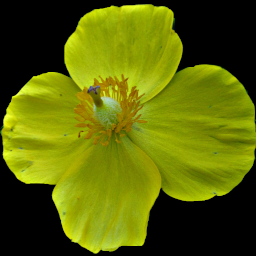Crabapple blossoms light up the woods around here before the leaves appear on most of the trees. These trees were blooming in late April near the edge of the woods in Mount Lebanon. More Crabapple pictures are here.
Gray places the genus Malus as a section in the larger genus Pyrus, but most modern botanists treat Malus separately. Gray’s description:
PYRUS [Tourn.] L. Calyx-like receptacle urn-shaped, bearing б sepals. Petals roundish or obovate. Stamens numerous. Styles 2-5. Fruit a large fleshy pome, or smaller and berry-like, the 2-6 cells imbedded in the flesh, papery or cartilaginous, mostly 2-seeded. —Trees or shrubs, with showy flowers in corymbed or umbellike cymes. (The classical name of the Pear-tree.) A large genus, often subdivided, but with sections less strongly or constantly marked than our few species would suggest.
MALUS (Hill) S. F. Gray. (APPLE.) Leaves simple; orifice of concave receptacle open; flesh of large subglobular fruit copious, free from sclerotic cells. Malus [Tourn.] Hill.
Leaves and usually the outer surface of the calyx-lobes glabrate.
Calyx-lobes persistent in fruit.
P. coronaria L. (AMERICAN CRAB.) Tree, somewhat armed, 6-10 m. high; leaves ovate or elliptic, usually rounded or even cordate at the base; those of the sterile shoots somewhat triangular-ovate and lobed, sharply serrate; petals broadly obovate, white or nearly so; pome greenish-yellow, hard and sour, 2-2.6 cm. in diameter, depressed-globose. (Malus Mill.) — Thickets and open woods, N. J. to Ont., Kan., and southw.


